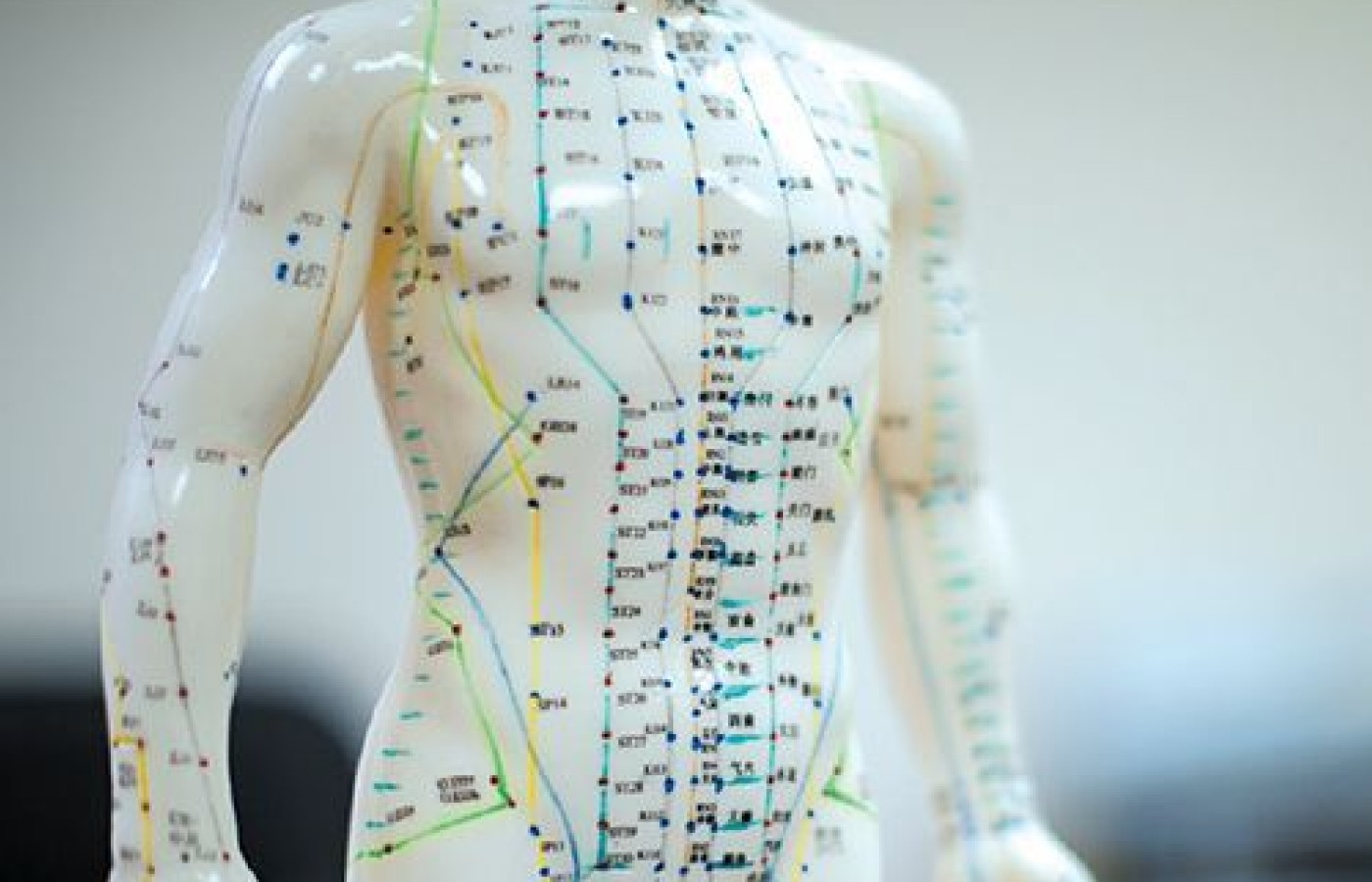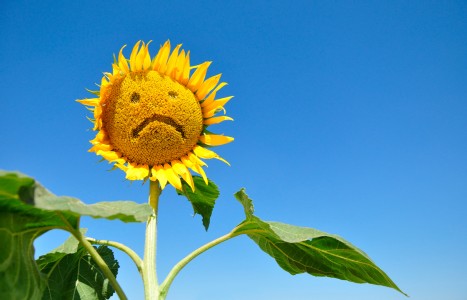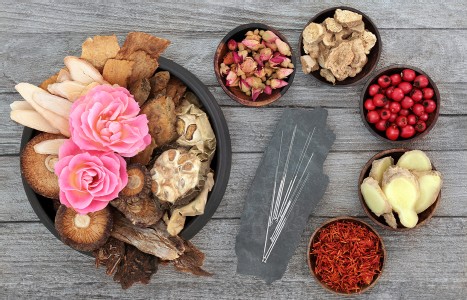Did any of you ever get the feeling in school that it simply was not OK to speak about wanting to be successful? To get into the nitty gritty details of how to make money in practice? Maybe you were even someone like me who was directly told by someone in a position of power that I needed to take what I could get because in private practice, I wouldn’t make money.
Learning the Transformative Language of the Channel System: The Sinew Channels
The Chinese medical classics describe the energetic terrain of the body in much detail. The acupuncture channel systems, as presented in the Ling Shu illustrate the various expressions our qi energy can take. The channels also show us where various energetic imbalances can originate.
The classical name given to the acupuncture channel systems are the Jing Luo: channels and collaterals. Jing-channels are suggestive of physiological entities that transmit functionality from the internal organs to all aspects of the body and mind. Luo-collaterals represent depositories for pathological overflow, safeguarding the Jing-channels from physiological disruption.
To an acupuncturist, the Jing Luo are the expansive communication system used to transmit therapeutic intention. Each channel system circulates a particular type of qi energy. Wei qi is the energy that circulates through the Sinew Channels (the Jing Jin); Ying qi circulates through the Luo Vessels (the Luo Mai), Yuan qi circulates through the Extraordinary Vessels (the Qi Jing Ba Mai). There are two channel systems that conduct more than one type of qi: the Primary Channels (the Zheng Jing) circulate both Wei and Ying qi; the Divergent Channels (the Jing Bie) circulate Wei and Yuan qi.
The personalities of the channel systems is based on the type/types of qi they circulate. As we explore the channel systems in this series of articles, we will get to know the channels via the qualities of their qi.

Each acupuncturist has their own favorite channel system to work with. This is usually based upon our way of seeing the world. Some of us are very intellectually-oriented: able to stay focused on the primary linear course of our lives. Some of us are more emotional, frequently distracted by our desires and feelings. Some of us make exploration of our personalities the focus of our lives, fascinated by the nature of our being. Others are committed to being rebels, trying to create change in the world. Still others are interested mostly in that which is non-mental: either the physicality of the body, or that which is more mysterious: the spirit.
It is interesting that within Chinese medicine, that which is associated with the most physical aspect of the body is also associated with the most insubstantial. Within the acupuncture channel systems, the Sinew Channels represent this curiosity. The Sinews are the manifestations of qi and blood: they are the muscles, tendons and ligaments of the body. As a channel system, the Sinews are very substantiated. They are big and wide. Yet, the type of qi that the Sinews conduct (Wei qi) is the most insubstantial of qi in the body. Yuan qi is associated with the Jing-essence: the heaviest of all material in the body. Ying qi is associated with the fluid aspect of the body: blood and body fluids. Compared to Wei qi, Yuan and Ying qi are two relatively dense energies. Wei qi is the most gaseous, non-material type of qi, often associated with the breath.
Each acupuncture channel system can be associated with particular organs. The Luo Vessels are associated with the organs that regulate blood: chiefly the Heart, Pericardium and Spleen. The Extraordinary Vessels are associated with the organs that store and conduct Jing-essence: the Kidneys and the Triple Heater mechanism. The Sinew Channels are associated with the organs that regulate Wei qi: instinctual autonomic function: the Lungs and the Liver.
Wei qi circulates mainly on the superficial aspect of the body: through the skin, sinews and sensory organs. However, Wei qi also has internal circulation: through the smooth muscles of the respiratory and digestive systems. Wei qi is responsible for respiration and digestive function (peristalsis), making it a survival level energy.
Wei qi is instinctual. We don't use our mental faculties to breathe or digest: this occurs naturally within our bodies. Respiration and digestion are the most vital processes. Without them, our bodies would not be able to sustain life. Wei qi is arguably the most vital of all the energies in our bodies, also the most primal. It is the body's internal "animal" wisdom. It allows survival of form. Wei qi is also associated with our immune system. It is the "defensive" qi of the body; the method by which we communicate and interact with the external world. It acts as a bridge between us (our Kidneys) and the outer world (our Lungs).
Working with Wei qi and the Sinew channels is to work with the breath: the Po, the spiritual attribute that is stored in the Lungs. Chapter 8 of the Su Wen says the Lung is like "a chancellor" or "prime minister" to the Heart (the "emperor"). The Su Wen associated the Lung with order, moderation, and the regulation of qi. The Heart is associated with consciousness, intelligence, wisdom and spiritual transformation. The Po is stored in the Lungs; the Shen is in the Heart.
According to Jeffrey Yuen in his lecture "Three Spirits, Seven Souls," as published by the New England School of Acupuncture (2002), the Shen "represents the animated spirit. It wants to experience life...[and] wants to become tangible." There is a level of desire, enthusiasm and excitement related to the Shen, and subsequently with the Heart. The Po "represents the current moment," says Yuen. "It is immediate consciousness." Physiologically, the Heart governs blood in the body, while the Lungs govern qi.
In Chinese medicine, the blood is strongly associated with consciousness and the mind, while qi is associated with the breath. Claude Larre and Elisabeth Rochat de la Vallee go so far as to translate the word qi as "breath" in their numerous translations of the Nei Jing. Qi is the breath of life. Along with the Shen, it is the animating force.
As healers, we often think of "transformation" having to do with the mind. Even Maoshing Ni's translation of Chapter 8 of the Su Wen (Shambhala Publications, 1995) says the Shen is responsible for "spiritual transformation." However, it is the Heart's relationship with the Lungs that allows this transformation to occur. No emperor can rule without a wise, trusted advisor. The importance of the Lungs, and subsequently Wei qi should not be forgotten within the process of personal transformation.
While many of us may think of the Sinew channels as merely ways to treat the physicality of the body (chiefly pain), they are subtly implied to be major tools for spiritual transformation within the acupuncture channel systems. The Sinew channels, as conduits of Wei qi intrinsically work with the breath, which many spiritual teachers say is the major force within our bodies to cultivate spiritual transformative change. According to Chapter 8 of the Ling Shu, all healing is about the spirit. This chapter emphasizes that acupuncture is a healing art that is especially resonant with the spirit. All needling, should be "rooted in the spirit."
According to Indian Tantric mystic Osho, in his book, The Book of Secrets: 112 Meditations to Find the Mystery Within, when it comes to spiritual cultivation, there is an important relationship between the "desiring mind" and the breath. Osho teaches that the great spiritual teachers of antiquity (the Buddha and Lao Tzu included) placed great importance on the breath as the main tool within spiritual practice.
"The mind is a mechanism of desiring...always seeking something...not concerned with the present. However, truth is in the present," said Osho. We can only find the "truth" through the breath." This is why most meditation practices focus so heavily on the breath. He also says that in the Tantric Sutras (Vigan Bhairav Tantra) Shiva doesn't give intellectual explanations when teaching spiritual cultivation, instead he gives meditation techniques that tell us to focus on the breath. When we work with the breath in a non-intellectual way, it brings us into the present. "And when the mind comes to the present, it stops...and you attain no-mind," which is his way of saying spiritual one-ness.
Transformation occurs through the breath. We cannot achieve it through the mind alone. The mind is only concerned with the past or the future. It cannot be present. Yet transformation only occurs when we are fully in the present. This is when we are able to "enter a new dimension."
To Osho, the most important practice as a human being is to learn "to be here and now." The only way to do this is through the breath. If we look at Osho's words through the language of Chinese medicine, we can see the Heart through its Shen represents our desires. The Shen is animation. It wants something. It communicates strongly with the Liver's Hun which is associated with time: past and present. Yet, the Su Wen says it is the Lungs through its Po that regulates and "advises" the Heart. Qi directs the blood: breath naturally has an impact on consciousness. It allows the Shen to let go of its striving, to come into the present moment and recognize that which is primordial, beyond the self: eternal.
This answers a major question for us as acupuncturists. Why would we want to work with a channel system that is primarily associated with unconscious, autonomic energy? What's the fun in that? Why not use the Primary Channels instead: they deal with both Wei (unconscious) energy as well as Ying (conscious) qi? One would think philosophically, through using the Primary Channels we can make that which is unconscious conscious. This is certainly a worthy effort. However, according to Osho, oftentimes our problems occur because we are too self-conscious. We are over-using our minds, which he says can never be in the present moment. The nature of mind is to always be in the past or the future. It is always desiring. Osho is essentially saying the agenda of the Shen will always get in the way. Arguably this is what keeps us striving in our lives. Without desire, we have no reason to be in human form. Our life is about our curriculum: our Shen's agenda. Yet, if we wish to reach a so-called higher state of consciousness, according to Osho, and many other spiritual traditions, we need to reach beyond the small (Shen) mind into a place of "no-mind:" into the big Shen.
If we think about it, when we are ill or stuck, it is usually because we don't know any other way to be. If we are primarily focused on our minds, we cannot change into something new. We can only draw upon what has already happened to us in the past. And oftentimes that is what is making us sick. The mind cannot take us into something new. According to Osho, the mind can only re-create what has already been. Yet, if we want to truly heal, which means transform into something new, we can only achieve this through being fully present. The mind, by nature, cannot be present. Only the breath can take us into the present, and therefore into transformation - to become something new. Healing requires working with the Po: our ability to be present, which Osho says possesses intrinsic, automatic transformative capacity.
To work with Wei qi is to work with the breath. The Sinew channels, as conduits of Wei qi, are a channel system that can help us to cultivate our Po. Osho has an interesting way of describing the breathing process. "Breath has two points. One is where it touches the body and the universe, and another is where it touches you and that which transcends the universe." He says we know the aspect of the breath that moves into the universe and into the body. But the other point of the breath we do not know: where it moves to the "no-body." Becoming aware of the breath's relationship to the "no-body," says Osho, creates "transformation." It can "transplant [a person] into a different dimension" of consciousness.
What is this concept of "no-body"? It is a common theme in Taoist philosophy. Thomas Cleary's translation of Chapter 1 of Chuang Tzu says: "Complete people have no self, spiritual people have no merit, saintly people have no name." Chapter 13 of the Tao Te Ching says: "The reason we have a lot of trouble is that we have selves. If we had no selves, what troubles would we have?" We have an idea about who we are, which limits us. This is our mind taking control of our lives. According to Taoist and Buddhist philosophy, we are essentially "no body." It is only when we try and be somebody that we create a problem for ourselves.
To connect to the "no-body" as Osho suggests occurs through the meditative process of working with the breath. Buddhist meditation practice, as well as the Tantric Scriptures advise us to focus on the "pause" between the in-breath and the out-breath. Within that pause, says Osho is the state of "non-being." What does this mean?
Jeffrey Yuen has an illuminating way of translating the acupuncture point HT-1 Ji Quan. It helps illuminate the concept of the "no body." Yuen translates the name of HT-1 as "The Ultimate Spring," saying it philosophically relates to "ultimate possibilities." This is arguably the state of consciousness spiritual teachers speak of when they talk about "non-being." When we can let go of who we think we are, we see that we are all things. Through becoming nothing, we can be everything.
This is essentially what the breath is: it is nothing, yet it connects to everything. We breathe in the entire universe when we take a breath. And then, a moment later we let everything go. Breathing is a state of being non-attached. It embraces everything, but holds onto nothing. For many of us, healing only occurs when we can embrace "ultimate possibilities," taking a leap of faith into becoming what we have no past experience of. To do this, we must be able to truly let go. This is the essential wisdom virtue of the Lungs, and also of the Sinew Channels.
The Sinew channels thus become the perfect pathways to reach beyond our mental limitations. They place utmost focus on the breath, connecting us to a mode of consciousness beyond our minds: to ultimate possibilities. According to Osho, it is necessary to transcend self-consciousness of the mind altogether. To do this as acupuncturists, we may want to work with channel systems that do not deal chiefly with Ying qi or blood.
The two acupuncture channel systems that represent Wei and Ying qi are the Sinew Channels and the Luo Vessels, respectively. From a pathological point of view, the Sinew Channels are the body's first line of defense. However, from a physiological perspective, the Sinews are also the body's natural, instinctual method of dealing with the world. They are our programmed way of interacting with the environment. The Nei Jing states how we as human beings are expressions of nature. Contained within all of us is the "natural way" to function.
It is only when the Sinews become weakened, when Wei qi is insufficient in dealing with the environment, that the Luo Vessels become activated. The Luo use Ying qi in the form of blood to trap a pathogen (or challenge) and keep it in a state of dormant latency in the body. The Luo don't resolve or let go of an issue, they store it, keeping it suppressed. The mind starts to work on the problem, trying to rationalize or figure it out. It does so by creating a story, relating to our past or through projections into the future. The Luo Vessels can be seen as the Heart working without the proper advisement or regulation of the Lungs. The (small) Shen begins to take control, which takes us away from the present moment into mental neurosis.
The Luo are created as needed. They are not intrinsic to the body like the Sinew Channels. They only develop when our natural Wei qi has failed to successfully deal with the external world. The Luo Vessel sequence as it is presented in Chapter 10 of the Ling Shu illustrates the disharmony that can exist between the Heart and the Lungs. The first Luo Vessel in the sequence is the Lung Luo. The Luo point that represents the Lung Luo Vessel is called Lie Que: "A Break in the Sequence." The Heart loses its regulatory relationship with the qi of the Lungs, creating stagnation within the blood system. Our "natural way" gets interrupted.
Blood is associated with the level of the mind and emotions in Chinese medicine. The ultimate goal within the Luo Vessel channel system is to restore the harmonious relationship between the Heart and the Lungs: to return the body to the natural, self-regulation of the Sinew channels. As channels of transformation, acupuncture channels that conduct Wei qi become key. The Sinew Channels represent the natural, instinctual way of the body. The Luo Vessels are the mental reactions: the rationalizations, desires and inhibitions.



